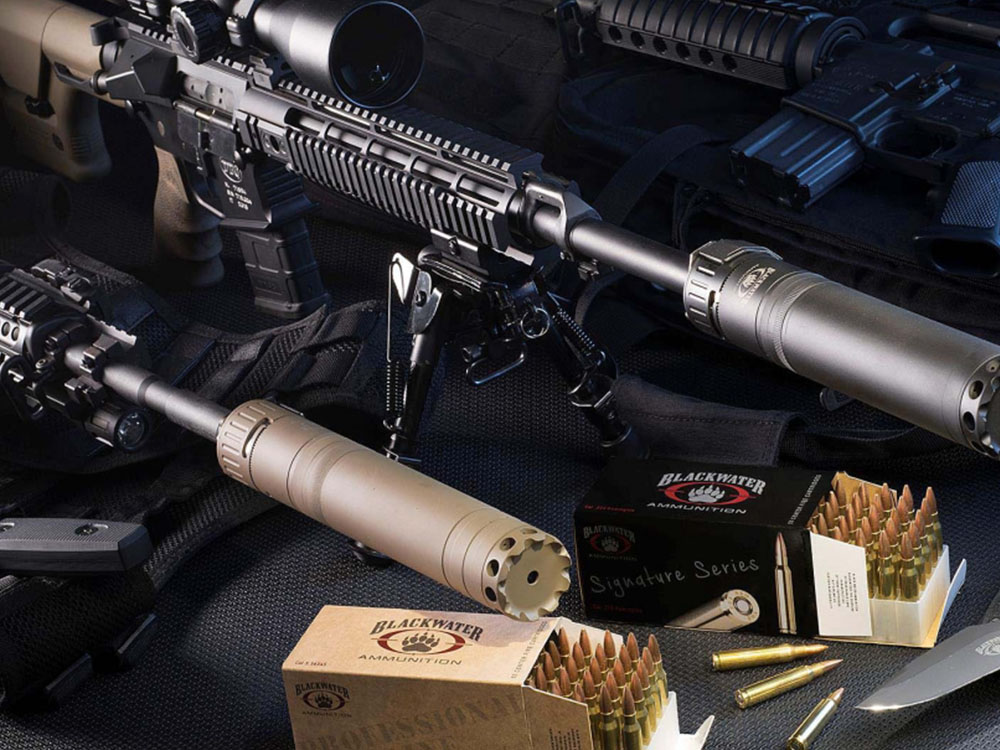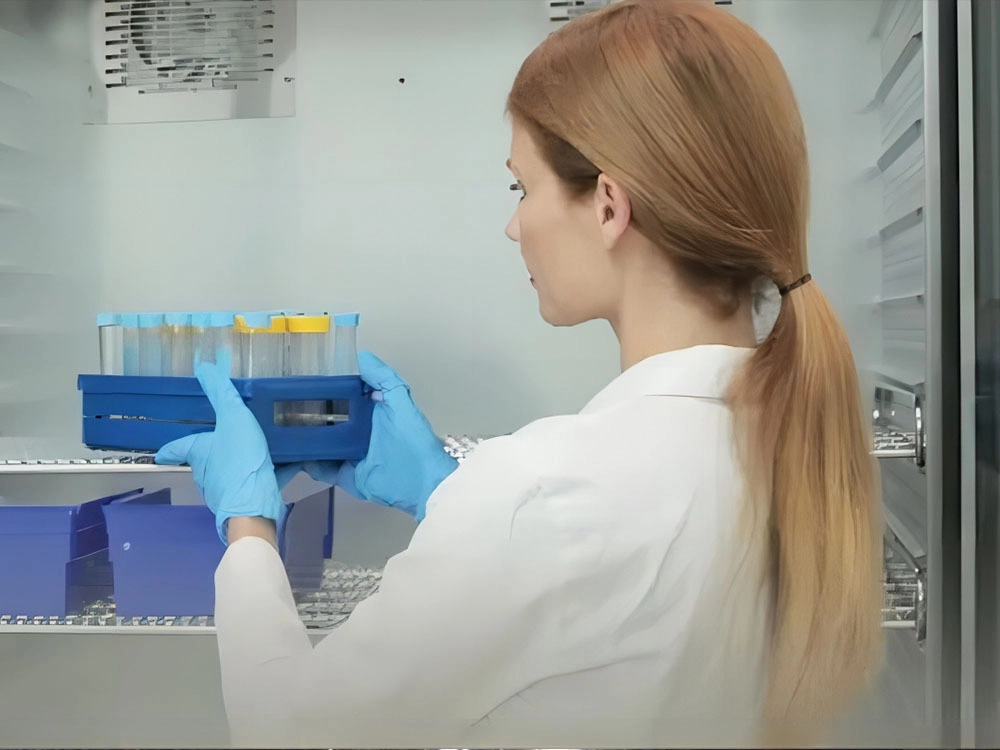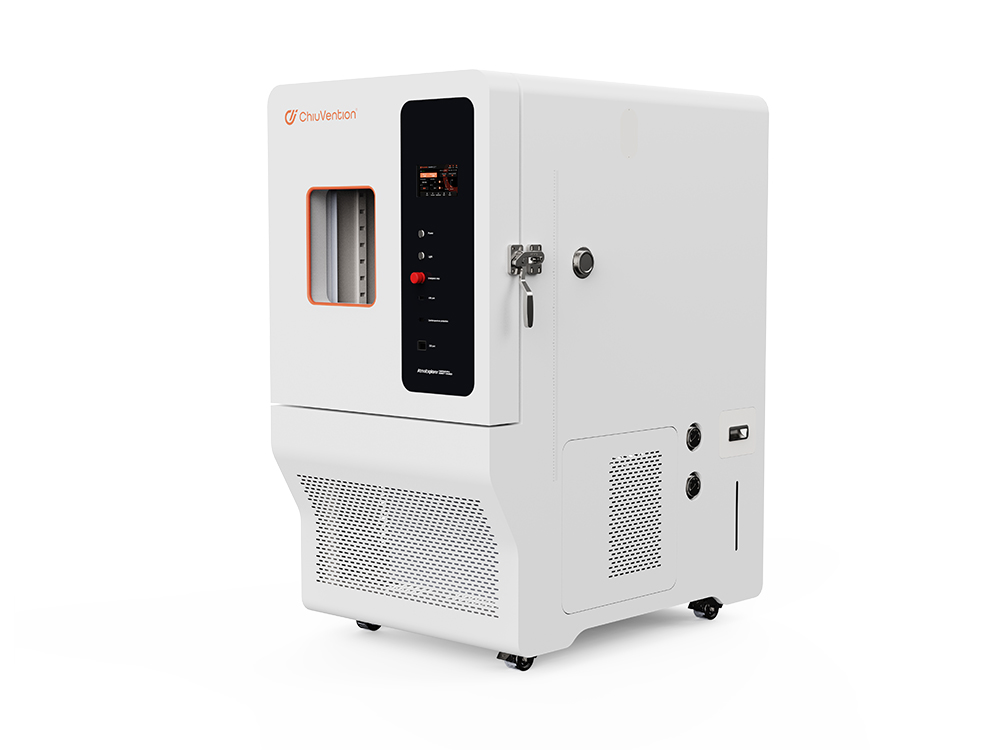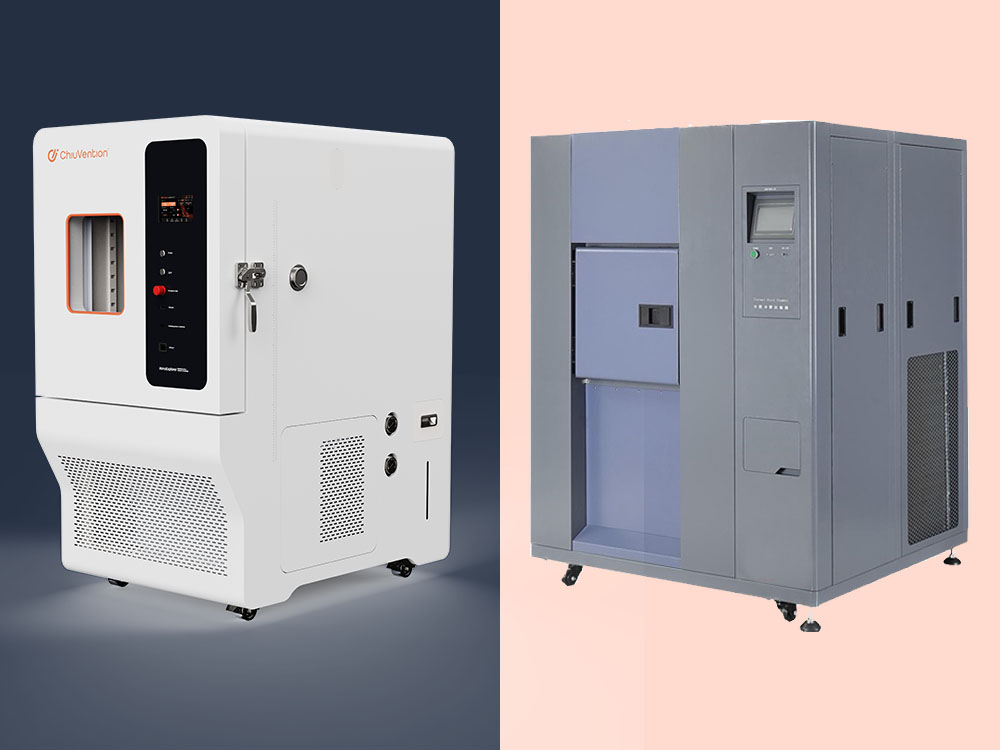Nowadays, the requirements for product quality are becoming increasingly stringent in various industries. Environmental test chambers are important tools. They ensure product performance and reliability. This fact is clear. It applies to aerospace, military research, weapons, and equipment. It also applies to 5G semiconductors, and the electrical and electronic industries. They all need to do environmental testing under specific conditions. They do this to ensure product performance and reliability. However, the chamber is professional equipment. It has many technical indicators. This causes some common ones to be easily ignored. This article will analyze the choice of environmental test chambers in detail. You need to pay attention to several common indicators. They will help you make the right decision.
Environmental and reliability test equipment selection should follow the following five basic principles:
1、 The reproducibility of environmental conditions
In the test chamber, it is impossible to perfectly reproduce the conditions of nature. However, within certain limits, people can correctly simulate the use of engineering products. They can also simulate storage, transport, and other processes in real conditions. Engineers summarized this paragraph in engineering language. The instructions say the test equipment must fit the product being tested. It should fit the environmental conditions. This includes the platform environment. The equipment should meet the product test specification. It is for the environmental conditions and their tolerances.” For example, the temperature box for military product testing should meet the national military standards GJB150.3-86 and GJB150.4-86. These standards have different requirements for uniformity and temperature control accuracy. This is the only way to ensure that environmental test can reproduce conditions.
2、Repeatability of environmental conditions
You may use the test equipment for many tests on the same product. Engineers may test reengineered products using different test equipment. This ensures that the same product in the same test has comparable results. The test equipment must provide repeatable conditions. The environmental test equipment stresses the product during testing. It includes thermal, vibration, and electrical stress. The equipment meets the same test requirements.
The test equipment provides repeatable environmental conditions. The national metrological department verifies it. The conditions meet the standards of the national technical supervision agencies. The test protocols developed after the qualification rely on this equipment. For this reason, test equipment must meet the test procedures. They must also meet the technical and precision requirements. Also, it must not exceed the time limit in the test cycle. For example, the shaker must meet many technical needs, like force and frequency. It must also meet precision needs, like vibration ratio and harmonic distortion. It must pass a check after each test. If no one has checked it in over two years, someone must check it again before using it.
3、You can measure and control three environmental conditions of the parameters.
Any environmental test equipment must show and control the conditions. This limits the environmental parameters to a certain range. It ensures that the test conditions are reproducible and repeatable. It’s also vital for the safety of the product test. It prevents out-of-control conditions from damaging the product and causing losses. Currently, many test specifications have a rule about accuracy. It says that accuracy should be at least one-third of the allowed error.
4、The exclusivity of environmental test conditions
Each environmental or reliability test has strict definitions. They define the categories of factors, their values, and their tolerances. Allow only the test factors. Judges need this to assess product failures and their causes. The goal is to get a clear basis for the environmental test equipment requirements. The tests also give the needed environment conditions. They prevent other stresses. For example, the shaker calibration spec covers just the table’s magnetic leakage. It also covers the signal-to-noise ratio of the acceleration. And it covers the in-band and out-of-band acceleration ratio. The test has random signals. It also has harmonic distortion and other precise indicators. They make sure the test conditions are unique. They also ensure that the project meets the verification goals.
5、 The safety and reliability of test equipment
Environmental testing, especially reliability testing, has long test cycles. The test objects are sometimes high-value military products. During testing, personnel often have to work at the test site. So, the test equipment must be safe, easy to use, and reliable. It must also last long to ensure proper testing. Test equipment needs various protection and alarms. It also needs safety interlocks. They should be perfect and reliable. They keep test personnel, the product under test, and the test equipment safe.
Selection of temperature and humidity box
1. The volume of choice
The technicians put the test product into the climate chamber. Testing (components, assemblies, parts, or the whole machine) occurs. This is to ensure that the air around the test product meets the test specifications. The chamber’s size and the test product’s profile must follow these rules:
a)The product’s volume (W×D×H) must be under (20-35)% of the test chamber’s working space. Recommend using 20%.) We recommend not exceeding 10% for products that heat up during the test.
b) The windward section area of the product under test is (35-50)% of the total area of the test chamber on the section. The recommended ratio is 35%.
c) The product under test must be at least 100 ~ 150mm from the wall of the test box. The recommended distance is 150mm.
The above three provisions are actually interdependent and unified. To 1 cubic metre square box, for example, the area ratio of 1: (0.35 ~ 0.5) is equivalent to the volume ratio of 1: (0.207 ~ 0.354). Distance from the box wall 100 ~ 150mm equivalent to the volume of the ratio of 1: (0.343 ~ 0.512).
The chamber must meet the above three rules. Its volume should be 3 to 5 times the product’s volume. The reasons for this requirement are as follows:
1]When you place the test piece in the chamber, it fills the smooth channel.
The narrowing of the channel will increase the airflow rate. This accelerates the heat exchange between the airflow and the test piece. This is inconsistent with reproducing the environment. The environmental test standards say that air flow around a test specimen should not exceed 1.7 m/s. This limit prevents unrealistic heat transfer between the test specimen and the air. In the unloaded test box, average wind speed is 0.6 ~ 0.8m/s, not over 1m/s. This meets the requirements of a) and b). The flow field’s speed may be (50 ~ 100)% of the average maximum wind speed of (1 ~ 1.7)m/s. To meet the requirements of the standard. If the test piece grows without limit, it will exceed the test standard’s maximum wind speed. This will happen if its volume or wind-facing area grows without limit. This will cast doubt on the test result’s validity.
2] The precision indicators show the climate chamber’s environmental parameters.
These include temperature, humidity, and salt spray rate. The indicators are for the empty chamber. When they put in the test piece, they will change. The larger the test piece, the more it will affect the chamber’s uniformity. Test data shows that the windward and leeward surfaces have a temperature difference. It is 3 to 8 ℃. In severe cases, it can be 10 ℃ or more. We need two things. They will make sure the environmental parameters around the product are uniform. They are a] and b].
3]Heat conduction says the air near the box’s wall is 2 to 3°C hotter than the center.
It may be 5°C hotter at the upper and lower temperature limits. The box wall is at one temperature and the flow field near it is at another temperature. The two temperatures are 2 ~ 3 ℃ apart. The bigger the difference between the test temperature and the outside air, the greater it is. So, the space within 100 ~ 150mm of the box wall is not available.
2. The choice of temperature range
At present, the range of foreign temperature test chamber is roughly -73 ~ +177 ℃, or -70 ~ +180 ℃. Most domestic manufacturers are generally -80 ~ +130 ℃, -60 ~ +130 ℃, -40 ~ +130 ℃, but also high temperature to 150 ℃. These temperatures can usually meet most domestic military and civilian product test needs. There is an exception for special needs, such as testing near engines and other heat sources. In these cases, do not blindly raise the temperature limit. The higher the upper limit temperature, the greater the difference. It’s between the inside and outside of the box. This makes the flow field inside the box less uniform. The smaller the available studio volume will be. But, if the upper limit is higher, the wall’s insulation, like glass wool, needs to resist more heat. The box sealing requirements are high. So, the box’s production cost rises.
3. The choice of humidity range
The humidity in domestic and foreign environmental test chambers is mostly 20 ~ 98% RH or 30 ~ 98% RH. If a humid and hot test chamber lacks a dehumidification system, its humidity range is 60 ~ 98%. This type of test chamber can only do high humidity tests, but it’s much cheaper. It is worth noting: the humidity index should follow the temperature range. Or, it should give the minimum dew point. Temperature affects humidity. For the same absolute humidity, higher temperatures mean lower relative humidity. For example, at an absolute humidity of 5g/Kg (meaning 1 kg of dry air has 5 grams of water vapor), when the temperature is 29 ℃. The relative humidity is 20% RH. At 6 ℃, the relative humidity is 90% RH. When the temperature drops below 4 ℃, the relative humidity goes above 100%. Condensation will occur in the box.
To make it hot and humid, just spray water vapor or water droplets into the air. Low temperature and low humidity are hard to control. At this time, the absolute humidity is very low, sometimes much lower than in the atmosphere. To dry the air flowing in the box, we need to dehumidify it. Now, most domestic and foreign temperature and humidity boxes use refrigeration dehumidification. It is in the box’s air pre-conditioning room with a set of refrigeration light tube.
When the wet air moves through the cold tube, its relative humidity will reach 100% RH. This is due to air saturation in the tube. The air will then condense, making it drier. This dehumidification method can reach a dew point below zero. But, when the cold point’s surface hits 0 ℃, dew will freeze on the light tube. This freezing affects heat exchange and reduces dehumidification. The box can’t be fully sealed. Wet air from the atmosphere will get in. This raises the dew point temperature.
However, the wet air only flows in the gap between the light pipe and the cold point. It quickly saturates and water vapor condenses. So, this dehumidification method is hard to lower the box’s dew point to below 0 ℃. The actual minimum dew point temperature of 5 to 7 ℃. A dew point of 5 ℃ equals an absolute moisture of 0.0055g / Kg. This corresponds to a 20% humidity at 30 ℃. If the temperature is 20 ℃ and the humidity is 20% RH, the dew point is -3 ℃. Cooling to remove humidity is hard. You must use air drying to make the welding rod.
4.The choice of control mode
The temperature and humidity test chamber has two cases. One has constant conditions and the other has alternating conditions.
This chamber is for testing high and low temperatures. It keeps a constant temperature. You set a target temperature. Then, the chamber automatically stays at that temperature. The test chamber’s temperature and humidity control mode is similar. You set a target temperature and humidity. The chamber can automatically adjust to these targets. The test chamber has set highs and lows. It can do the test by the preset curve. At can do it at the fastest speed. It can control the rate. It does this by the slope of the curve. Similarly, the high and low temperature humidity test chamber has a preset curve. It sets the temperature and humidity. It can control based on the preset. Of course, the alternating test chamber is like the constant test chamber. But, it costs more to make.
The alternating test chamber needs extra parts. These parts include an automatic curve recorder and a program controller. It also needs a way to open a fridge in the chamber to cope with high temperatures. So, an alternating test chamber usually costs over 20% more than a constant test chamber. So, we should be realistic about the test method’s needs. It’s the starting point. We must choose between a constant test chamber or an alternating test chamber.
5. The choice of the rate of temperature change
The chamber has no cooling speed indicators. It takes 90 to 120 min to cool from room temperature to the minimum. Humidity chambers have to change their temperature change rate. This is unlike high and low temperature test chambers. Generally, you need to set the speed at 1 ℃ / min, but you can adjust it. The chamber has a rapid temperature change test. The rate of change is fast. It can warm or cool at 3 ℃ / min ~ 15 ℃ / min. In some segments, it can even reach 30 ℃ / min or more.
The rapid temperature change test chamber has a fast speed and a wide temperature range. The range is generally -60 ℃ to +130 ℃. But, the cooling rate’s assessment for this range differs. It is -55 ℃ to +80 ℃ for some tests. For others, it is -40 ℃ to +80 ℃.
On the temperature change test, there are two ways to mention the rate. One is the whole average rate. The other is a linear rate (actually the average speed every 5 minutes). The average speed is the temperature range in the test box. It is the difference between the highest and lowest temperatures, divided by the time. Now, foreign makers of test gear must provide the temperature rate. It’s called the full average rate. The linear temperature rate is for any 5 minute period. It ensures the rate of change. The key part is the last 5 minutes of the cooling. It ensures the hardest temperature drop. The chamber needs to achieve the cooling rate. From a certain view, the linear speed of temperature change is more scientific. It’s the rise and fall rate averaged over 5 minutes.
So, the test equipment should have:
The whole average temperature increase and decrease rate
The linear increase and decrease rate (every 5 min)
In general, the linear speed of temperature change is half the whole average speed.
6. Wind speed
The standards require wind speed to be less than 1.7m/s. This is for temperature and humidity chambers. In testing, lower wind speed is better. High wind speeds will speed up heat exchange between the test piece and the chamber’s airflow. This harms the test’s accuracy. But, to keep the working chamber uniform, the test chamber needs circulating wind. But the rapid temperature change test chamber and the integrated environmental test chamber test temperature. They also test humidity, vibration, and other factors. To chase rapid temperature change, they must speed up the air flow in the box. The wind speed is usually 2 to 3 m/s. So, for different purposes, the wind speed limits vary.
7.Temperature fluctuation
Temperature can fluctuate easily. All test equipment makers make most of the fluctuations. They can control them within ± 0.3 ℃.
8. Temperature field uniformity
The test must mimic the real conditions of nature. So, the test must ensure that the product’s perimeter has the same temperature. Thus, the test box must limit temperature gradients and fluctuations. In the national military standard GJB150.1-86, “test samples should be within ± 2 ℃ of the test temperature. The temperature work does not exceed 1 ℃ / m or a total maximum value of 2.2 ℃ (test samples do not work).
9. The accuracy of humidity control
In the measurement of humidity, the chamber uses the wet and dry bulb method. It must meet the requirements of the manufacturing standards GB10586. The allowed deviation in relative humidity is ± 23% RH. The temperature must be accurate to control humidity. The temperature must be accurate to meet the requirements of humidity control. Fluctuations are generally less than ± 0.2 ℃. Otherwise it is difficult to meet the requirements of humidity control accuracy.
10. Cooling method selection
If the test chamber includes a refrigeration system, it must cool the system. The test chamber has air-cooled, water-cooled two forms.
For more environmental test chamber, Please visit: https://chiuventionclimatechamber.com
For more environmental test simulation programmes,environmental testing knowledge, instrument knowledge, and environmental testing laboratory knowledge, please contact us: [email protected]



